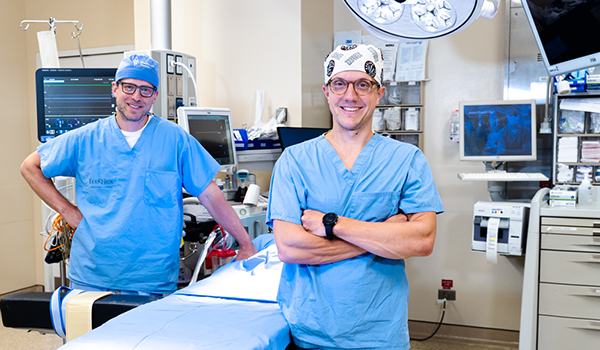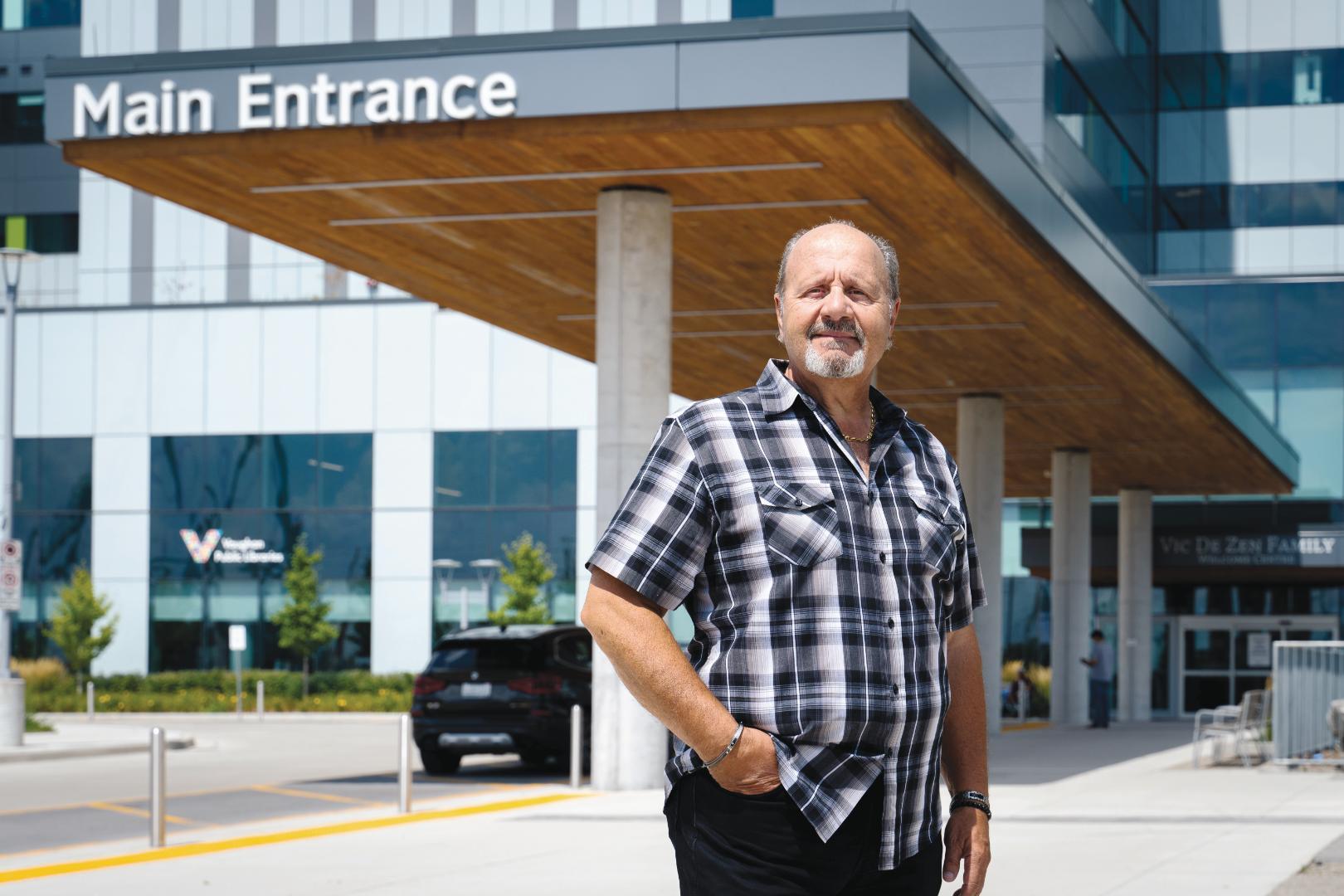 Carmine didn’t hear much after these two words: kidney and cancer. His mind closed up and he felt lightheaded.
Carmine didn’t hear much after these two words: kidney and cancer. His mind closed up and he felt lightheaded.
As he struggled to understand, Dr. Michael Kogon, Division Head of Urology at Mackenzie Health, confirmed Carmine’s kidney would need to be removed. Carmine’s life turned on a dime.
He hadn’t felt right for a while, he says, but he was working and still playing golf. Initial investigations with his family physician didn’t turn up any obvious issues. However, within a few months, a frightening gush of blood in the bathroom put Carmine under the care of urology at Mackenzie Health, and cancer was confirmed.
Cancer was the last thing Carmine wanted or expected to hear, but the team was already booking a date for surgery. He would be losing one of his kidneys, and it was coming out right away.
“They said lots of people live with one kidney, it’s not the end of the world,” remembers Carmine.
However, once his cancerous kidney was removed, his doctors feared cancer would spread to the other kidney, putting it at risk. If that kidney succumbed, Carmine would have to begin dialysis, putting an end to golf, travel, and perhaps even work. His fate would be tied to a dialysis machine or a kidney transplant. With his cancer history, it’s possible he would not be a candidate for kidney transplant at all.
Despite the grim finding, Carmine’s fortunes were about to turn around. Mackenzie Health, Carmine’s community hospital, not only boasts an ambitious and accomplished team of clinicians in urology and surgery, but it also has an advanced and powerful surgical tool rarely found in Canadian hospitals, let alone community hospitals — thulium laser technology.
Thulium laser is an advanced and flexible surgical tool used in urology. It dramatically reduces risk of bleeding and infection, and it can be used endoscopically, making it much less invasive than open surgery, without the associated risks.
The removal of his kidney was just the beginning for Carmine. As he transitioned into managing his cancer and protecting his remaining kidney, he became a “regular.” He sees his care team every 16 weeks or so for surveillance and scoping, and each visit usually requires a procedure when something is found.
It’s not lost on him that this highly-specialized care requires other patients to travel far from home, incurring additional costs, more time off work, and additional stress at an already stressful time.
“The reason Carmine is not on dialysis today, without a working kidney, is this technology,” says Dr. Ryan Fitzpatrick, one of Carmine’s treating physicians. “With the laser we can manage his cancer on an ongoing basis, and this was not possible even five years ago.”
Carmine’s care is a team project at Mackenzie Health, applying the best thinking from surgery and urology with leading-edge technologies used in new ways. This combination is creating an exciting area of excellence for laser surgery in urology, making Mackenzie Health a place where top clinicians want to practice.
“Our division is growing with young doctors who are highly-trained and have a great deal of fellowship experience. This ambition, and access to this technology, makes Mackenzie Health a sought-after place to work. There isn’t another team of clinical talent in the country as well trained or well-equipped as this team, and we know donors have made that possible,” notes Dr. Fitzpatrick.
Reflecting on his treatment, Carmine thanks the donors of the Ultimate campaign for his ongoing surgical miracle. Earlier this year, a $10-million gift to the surgical unit at Cortellucci Vaughan Hospital from community builder Mitchell Goldhar saw the unit renamed in his honour.
The Mitchell Goldhar Surgery Unit features seven operating suites, two radiology rooms and one procedure room. Surgical teams have the latest smart technology at their fingertips and the patient’s digital images — including X-rays and scope video recordings — can be called up and read in an instant. Videoconferencing makes it possible for surgeons to consult with experts around the world in real time without leaving the patient’s side.
“Having these doctors and this technology right in my community, I’m very lucky,” says Carmine, “They saved my life, and they saved my quality of life, too.”
